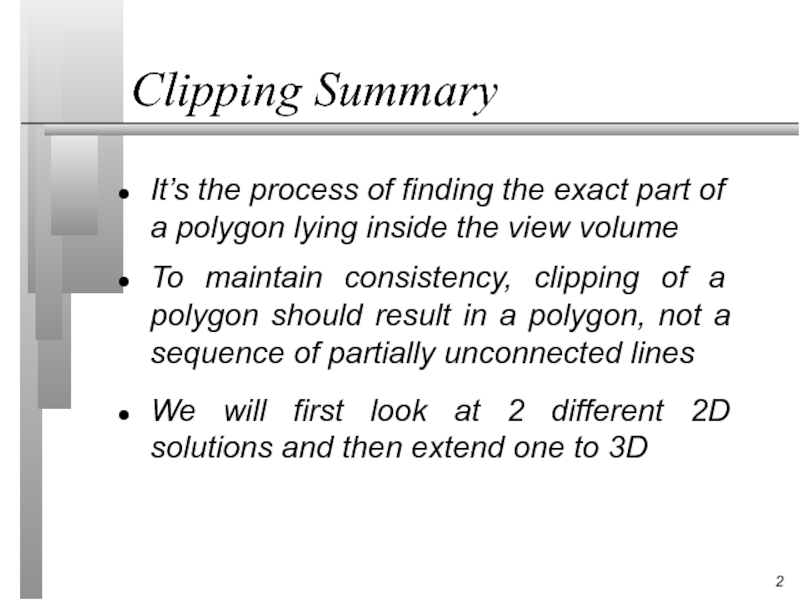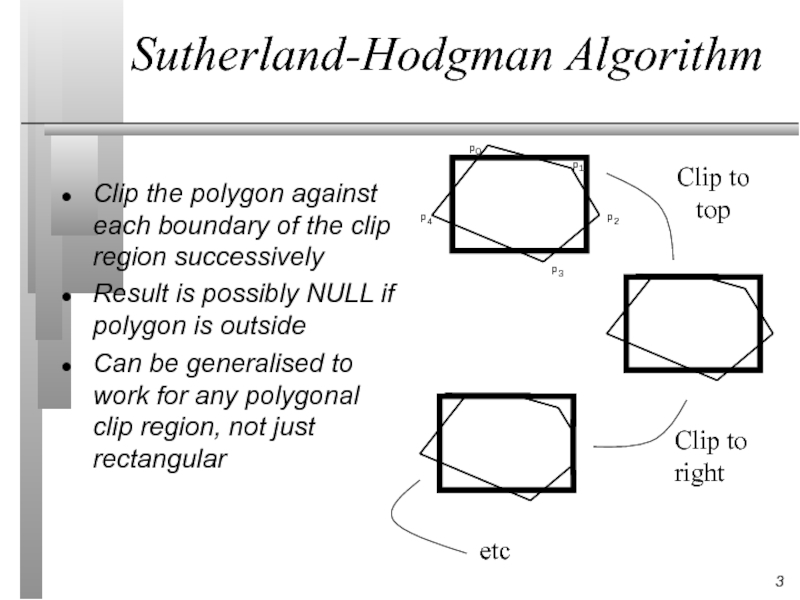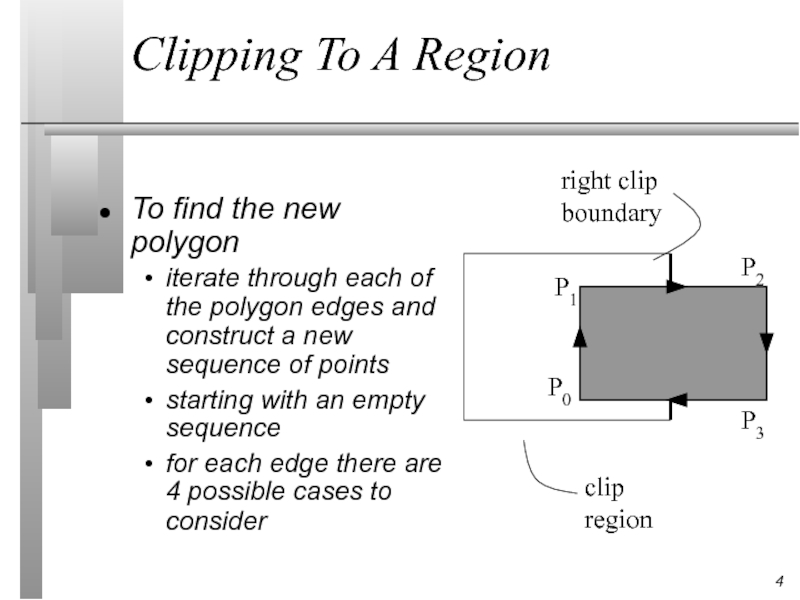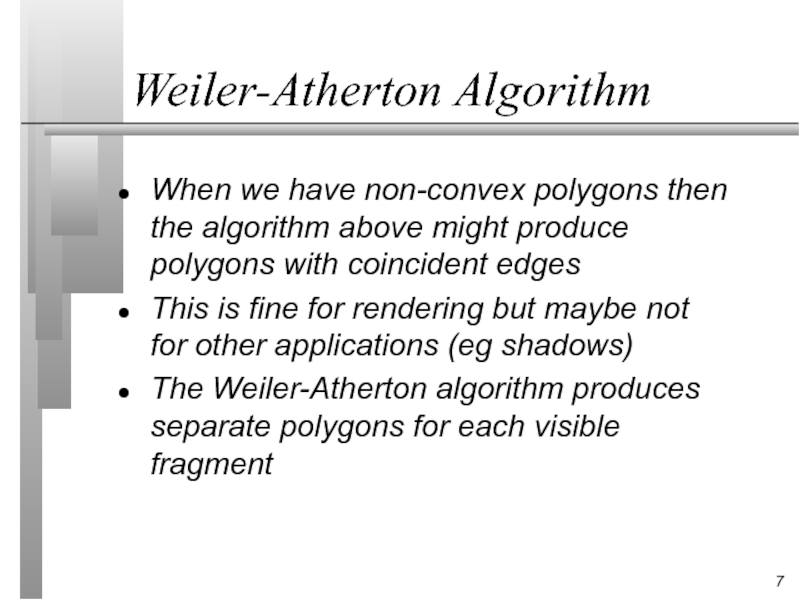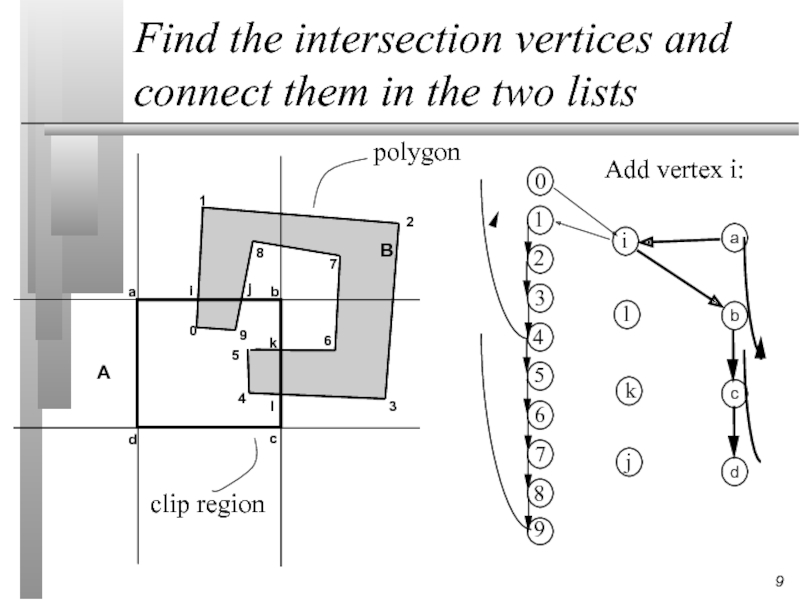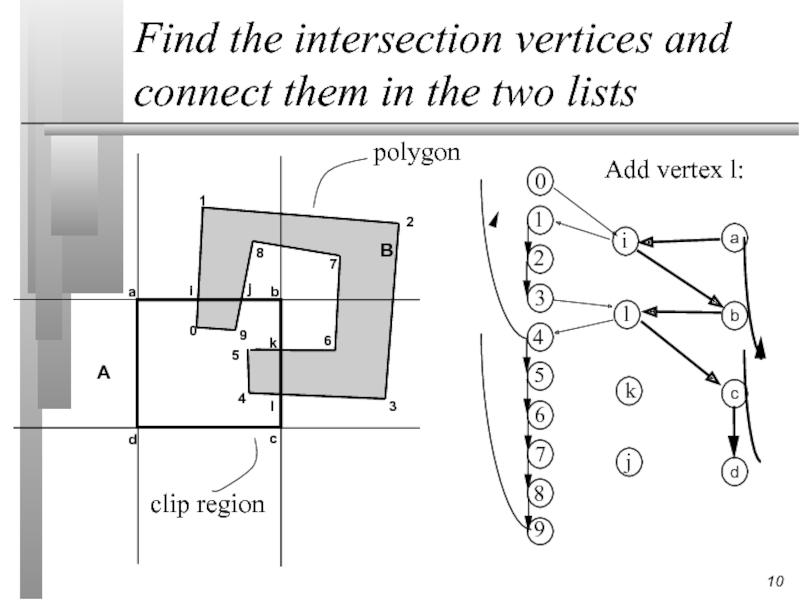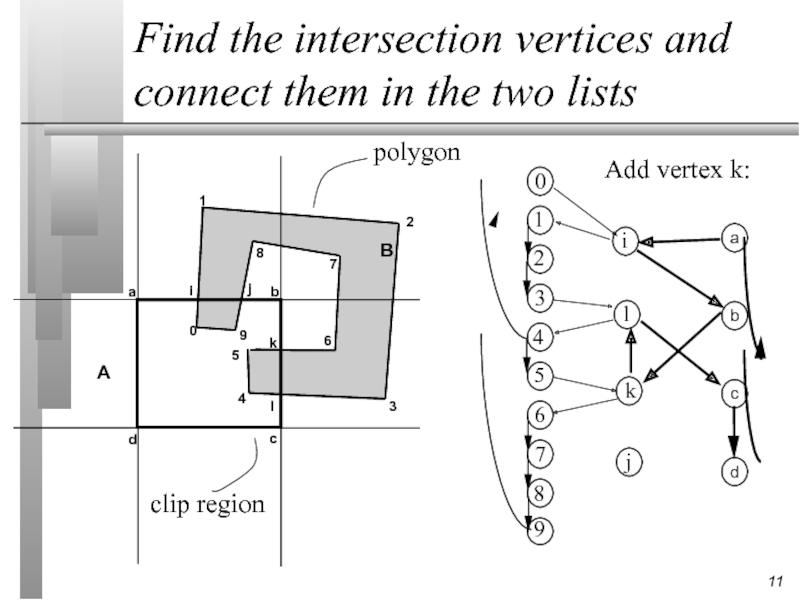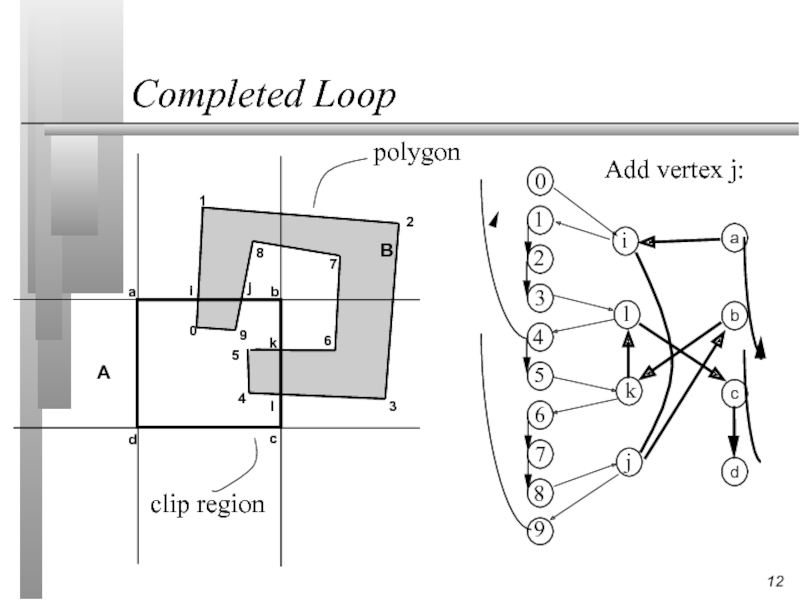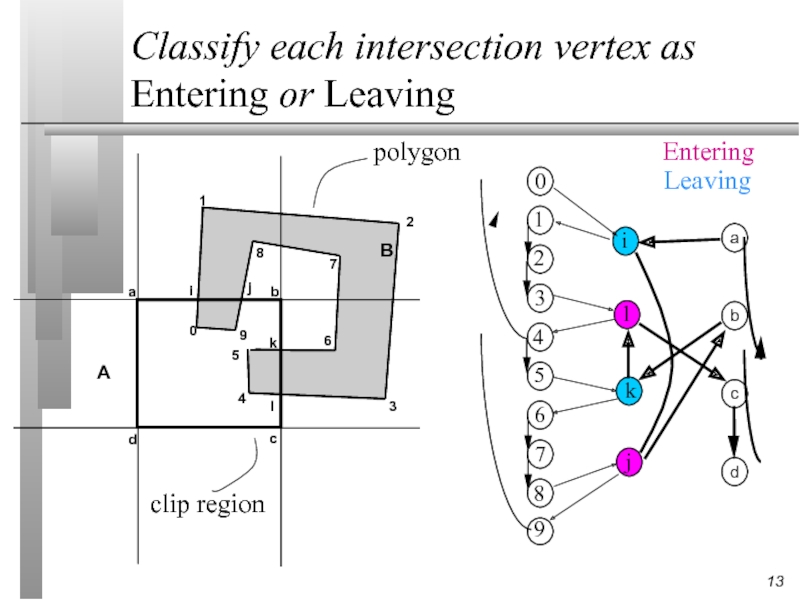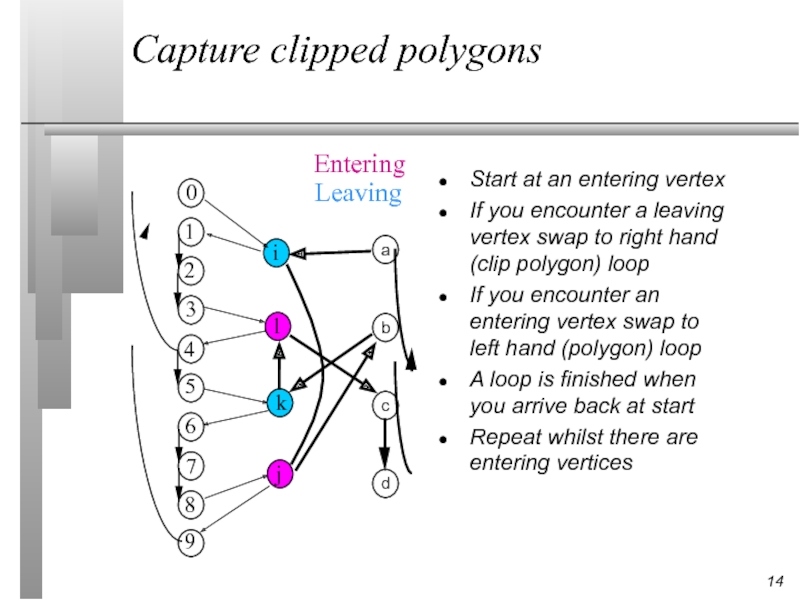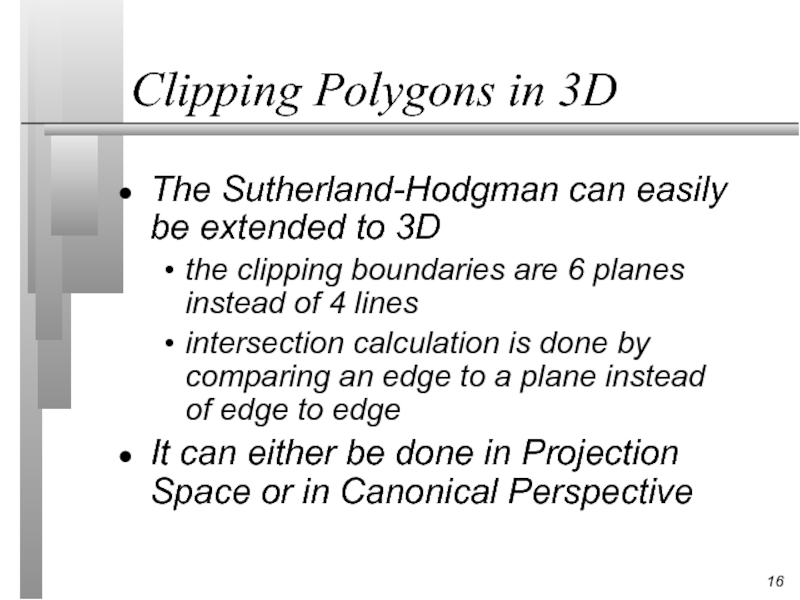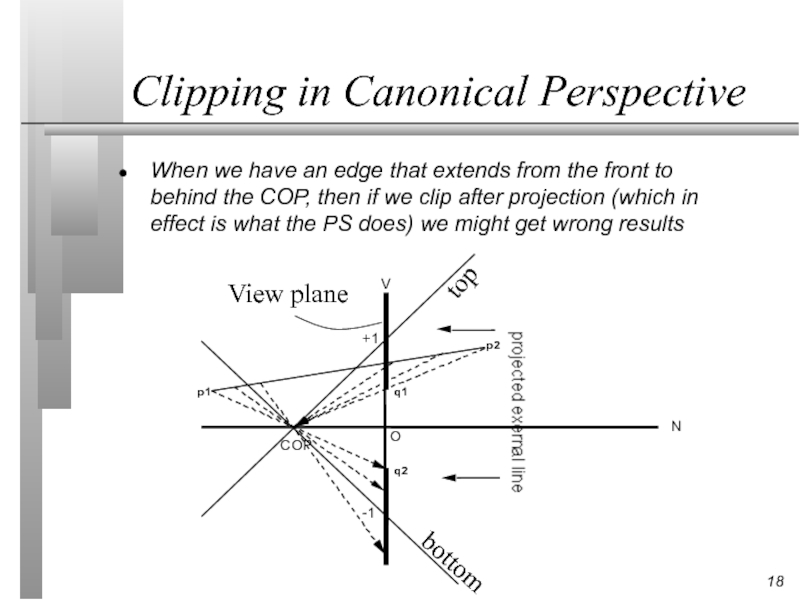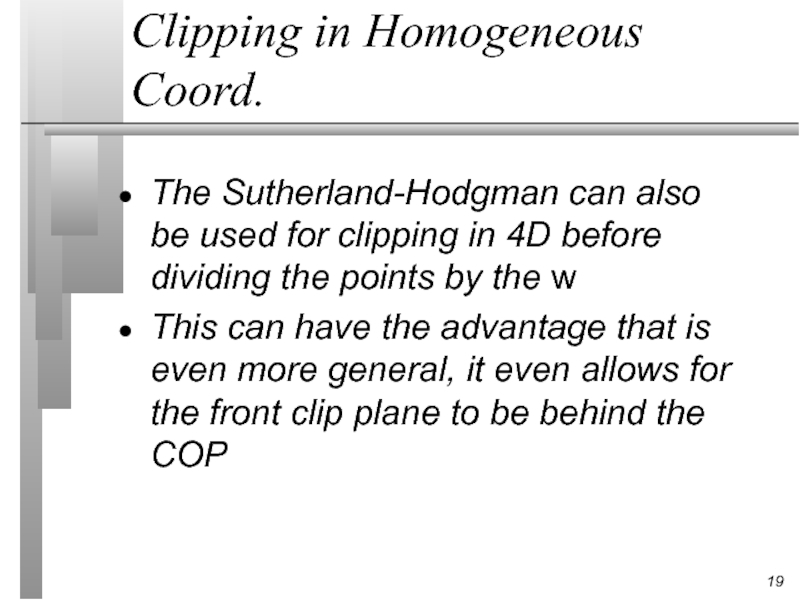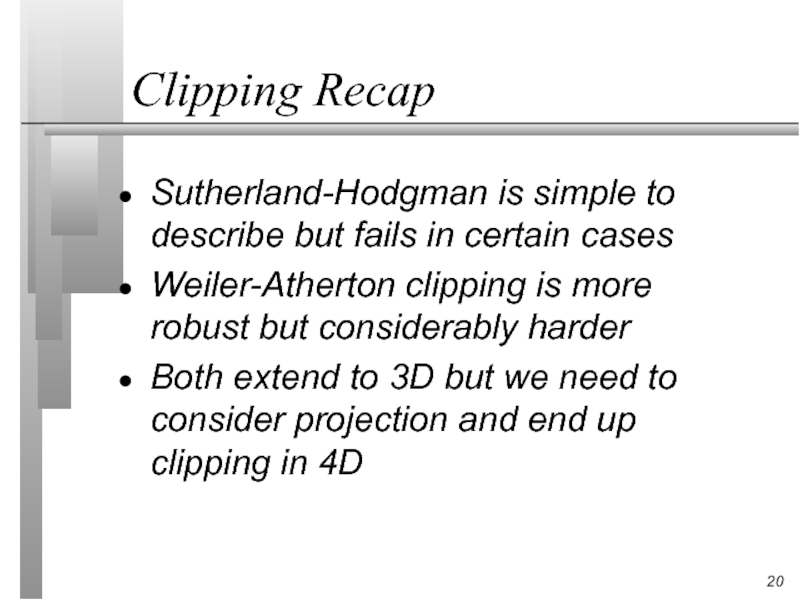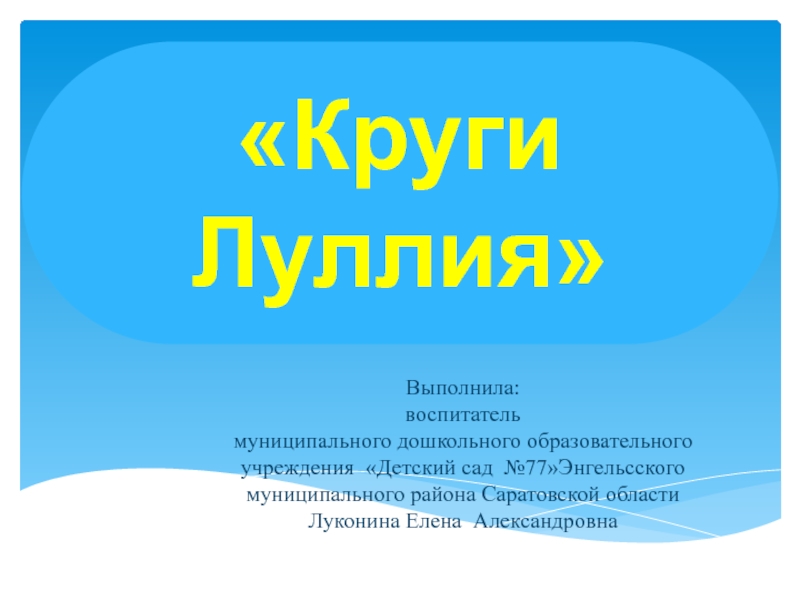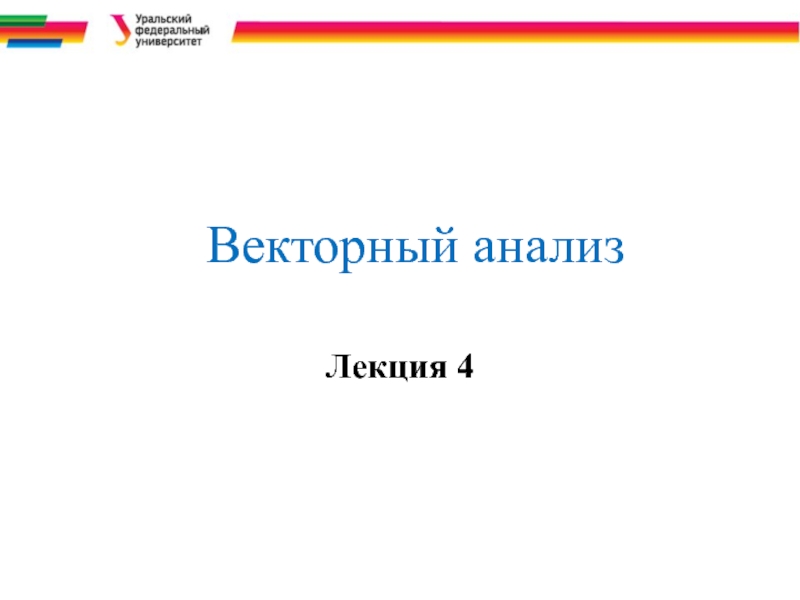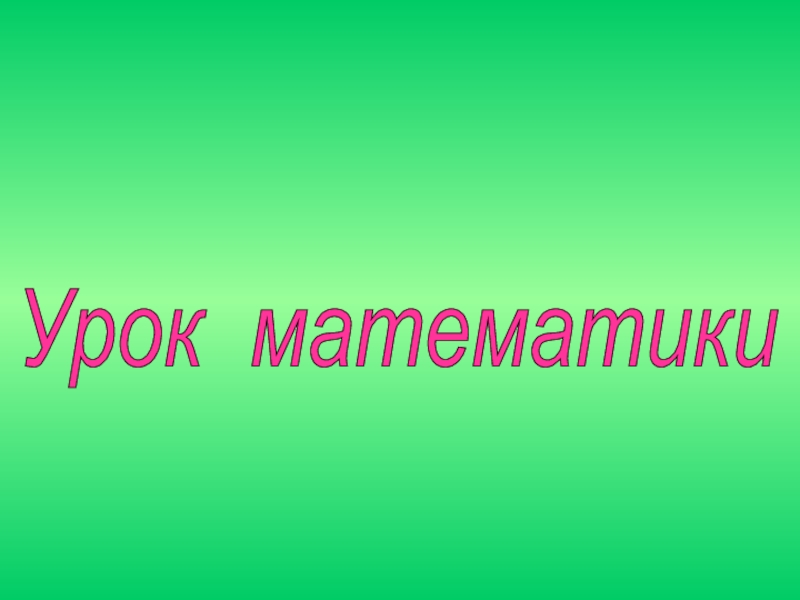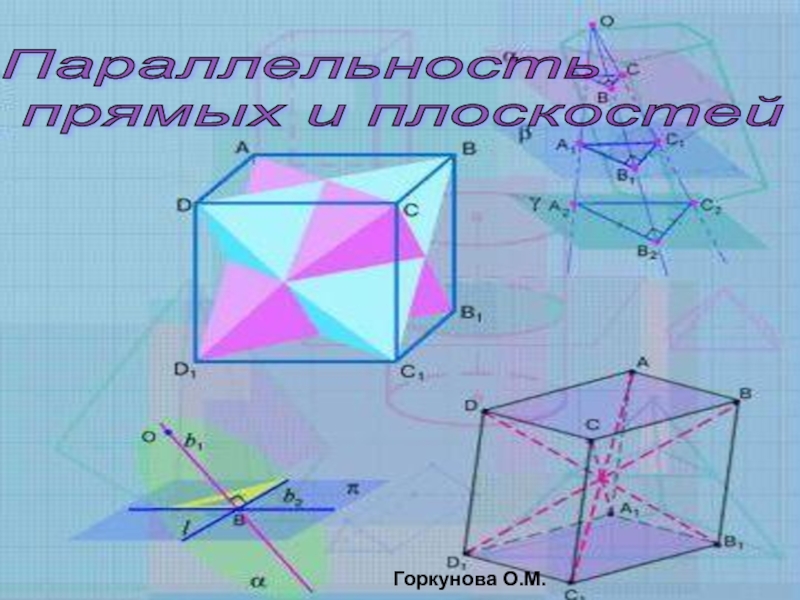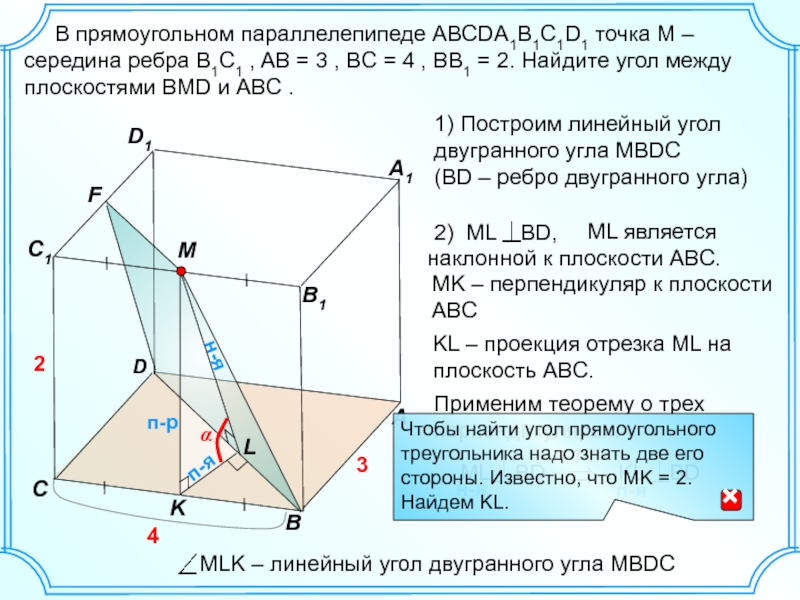- Главная
- Разное
- Дизайн
- Бизнес и предпринимательство
- Аналитика
- Образование
- Развлечения
- Красота и здоровье
- Финансы
- Государство
- Путешествия
- Спорт
- Недвижимость
- Армия
- Графика
- Культурология
- Еда и кулинария
- Лингвистика
- Английский язык
- Астрономия
- Алгебра
- Биология
- География
- Детские презентации
- Информатика
- История
- Литература
- Маркетинг
- Математика
- Медицина
- Менеджмент
- Музыка
- МХК
- Немецкий язык
- ОБЖ
- Обществознание
- Окружающий мир
- Педагогика
- Русский язык
- Технология
- Физика
- Философия
- Химия
- Шаблоны, картинки для презентаций
- Экология
- Экономика
- Юриспруденция
Clipping summary презентация
Содержание
- 1. Clipping summary
- 2. Clipping Summary It’s the process of finding
- 3. Sutherland-Hodgman Algorithm Clip the polygon against each
- 4. Clipping To A Region To find the
- 5. Clipping a polygon edge against the boundary
- 6. Still the Sutherland-Hodgman We can determine
- 7. Weiler-Atherton Algorithm When we have non-convex polygons
- 8. Weiler-Atherton Algorithm loop of polygon vertices loop of region vertices
- 9. Find the intersection vertices and connect them
- 16. Clipping Polygons in 3D The Sutherland-Hodgman can
- 17. Clipping in Projection Space The view volume
- 18. Clipping in Canonical Perspective When we have
- 19. Clipping in Homogeneous Coord. The Sutherland-Hodgman
- 20. Clipping Recap Sutherland-Hodgman is simple to describe
Слайд 2Clipping Summary
It’s the process of finding the exact part of a
To maintain consistency, clipping of a polygon should result in a polygon, not a sequence of partially unconnected lines
We will first look at 2 different 2D solutions and then extend one to 3D
Слайд 3Sutherland-Hodgman Algorithm
Clip the polygon against each boundary of the clip region
Result is possibly NULL if polygon is outside
Can be generalised to work for any polygonal clip region, not just rectangular
Clip to
top
Clip to
right
etc
Слайд 4Clipping To A Region
To find the new polygon
iterate through each
starting with an empty sequence
for each edge there are 4 possible cases to consider
clip
region
right clip
boundary
Слайд 5Clipping a polygon edge against the boundary
Given an edge P0,P1 we
entering the clipping region
add P and P1
leaving the region
add only P
entirely outside
do nothing
entirely inside
add only P1
Where P is the point of intersection
OUT
IN
Visible
Side
Слайд 6Still the Sutherland-Hodgman
We can determine which of the 4 cases
To sum it up, an example:
P0
Pa
Pb
P3
Слайд 7Weiler-Atherton Algorithm
When we have non-convex polygons then the algorithm above might
This is fine for rendering but maybe not for other applications (eg shadows)
The Weiler-Atherton algorithm produces separate polygons for each visible fragment
Слайд 9Find the intersection vertices and connect them in the two lists
1
2
3
5
4
6
8
7
9
0
a
b
c
d
a
b
c
d
0
1
2
3
4
5
6
7
8
9
A
B
i
j
k
l
clip
polygon
i
l
k
j
Add vertex i:
Слайд 10
1
2
3
5
4
6
8
7
9
0
a
b
c
d
a
b
c
d
0
1
2
3
4
5
6
7
8
9
A
B
i
j
k
l
clip region
polygon
i
l
k
j
Add vertex l:
Find the intersection vertices and connect them in
Слайд 11
1
2
3
5
4
6
8
7
9
0
a
b
c
d
a
b
c
d
0
1
2
3
4
5
6
7
8
9
A
B
i
j
k
l
clip region
polygon
i
l
k
j
Add vertex k:
Find the intersection vertices and connect them in
Слайд 13
1
2
3
5
4
6
8
7
9
0
a
b
c
d
a
b
c
d
0
1
2
3
4
5
6
7
8
9
A
B
i
j
k
l
clip region
polygon
i
l
k
j
Entering
Leaving
Classify each intersection vertex as Entering or Leaving
Слайд 14
1
2
3
5
4
6
8
7
9
0
a
b
c
d
i
l
k
j
Entering
Leaving
Capture clipped polygons
Start at an entering vertex
If you encounter a leaving
If you encounter an entering vertex swap to left hand (polygon) loop
A loop is finished when you arrive back at start
Repeat whilst there are entering vertices
Слайд 15
1
2
3
5
4
6
8
7
9
0
a
b
c
d
i
l
k
j
Entering
Leaving
Capture clipped polygons
Loop 1:
L, 4, 5, K
Loop 2:
J, 9, 0,
Слайд 16Clipping Polygons in 3D
The Sutherland-Hodgman can easily be extended to 3D
the
intersection calculation is done by comparing an edge to a plane instead of edge to edge
It can either be done in Projection Space or in Canonical Perspective
Слайд 17Clipping in Projection Space
The view volume is defined by:
Testing for the
x0 ≤ 1 and x1 ≤ 1 entirely inside
x0 ≤ 1 and x1 > 1 leaving
x0 > 1 and x1 ≤ 1 entering
x0 > 1 and x1 > 1 entirely outside
Слайд 18Clipping in Canonical Perspective
When we have an edge that extends from
V
N
+
1
-
1
C
O
P
O
p
1
p
2
q
1
q
2
top
bottom
View plane
Слайд 19Clipping in Homogeneous Coord.
The Sutherland-Hodgman can also be used for
This can have the advantage that is even more general, it even allows for the front clip plane to be behind the COP
Слайд 20Clipping Recap
Sutherland-Hodgman is simple to describe but fails in certain cases
Weiler-Atherton
Both extend to 3D but we need to consider projection and end up clipping in 4D

